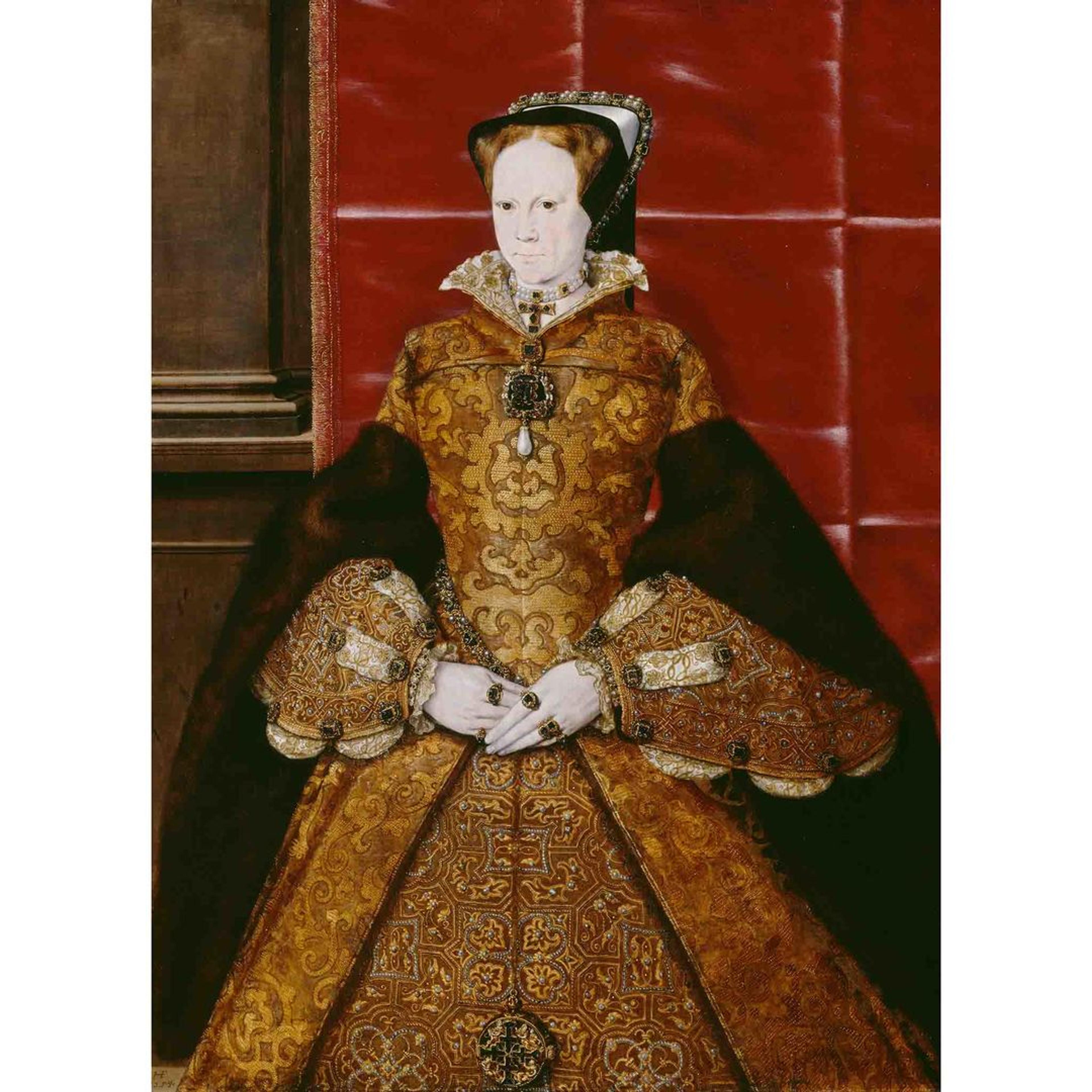语音指南

583. Mary I, Hans Eworth, 1554
NARRATOR:
Like her father, Henry VIII, Mary I loved finery. This portrait by Hans Eworth shows her richly dressed; she has opulent furs over her arms, and she’s adorned with extravagant jewels.
After Henry divorced her mother, Katherine of Aragon, Mary’s position had been highly precarious. But upon the death of her brother, Edward, she was recognized as the true claimant of the throne. Curator Adam Eaker.
ADAM EAKER:
Mary I was the very first woman to ever rule England in her own right. And as such, there were enormous pressures on her to establish a new visual language, to assert her own legitimacy.
NARRATOR:
Here, Mary has just become queen, at the age of 37. And she is negotiating a marriage with the Habsburg prince, the future Philip II of Spain.
ADAM EAKER:
We know that already by this time Mary was suffering from very severe health issues. She would die in her forties. She was never able to have surviving children. And it seems likely that Eworth, in portraying her, was, to a certain degree, flattering.
NARRATOR:
The portrait also conveys key messages for the Catholic Habsburgs. Mary wears her mother’s cross at her neck; and hanging from her waist is a container for a holy relic. Both suggest her intention to bring England back to the Roman Catholic church.
So Mary used this portrait to earn a place among European rulers
ADAM EAKER:
Both she and her sister Elizabeth, who would succeed her, encountered scorn from European courts.
NARRATOR:
Mary once sent a messenger to the King of France. The King flippantly sent him away. We get a firsthand report of this episode from an ambassador present at the scene.
MALE VOICE:
As the herald came in the name of a woman it was unnecessary for him to listen to anything farther, as he would have done had he come in the name of a man.
ADAM EAKER (continuing):
They were treated dismissively, because women occupying the throne was such a novelty and such a threat to traditional male dominance in the period.
###